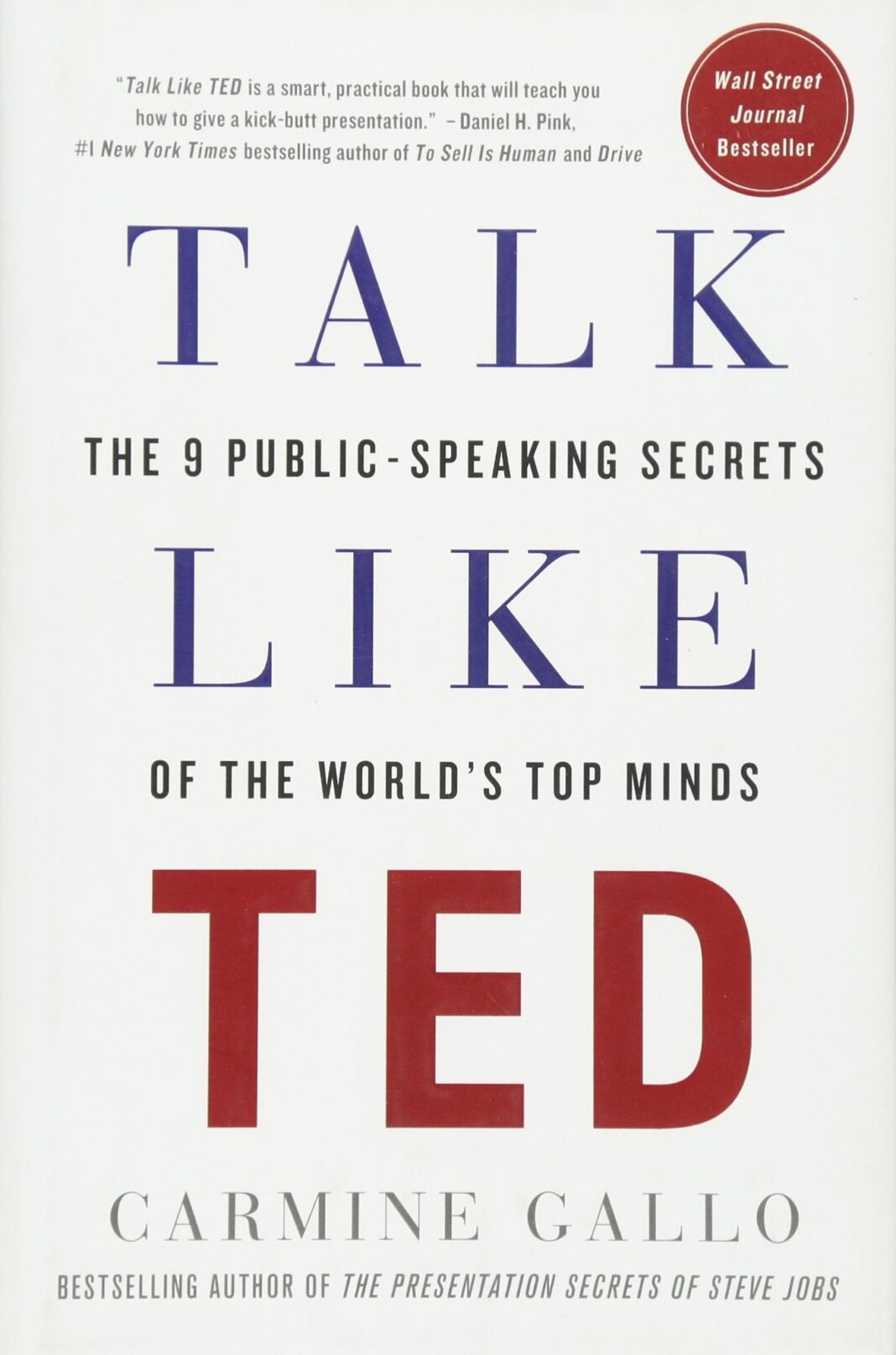People cannot inspire others unless and until they are inspired themselves. “In our culture we tend to equate thinking and intellectual powers with success and achievement. In many ways, however, it is an emotional quality that separates those who master a field from the many who simply work at a job,” writes Robert Greene in Mastery.
==========
In any language, on any continent, in every country, those speakers who genuinely express their passion and enthusiasm for the topic are the ones who stand apart as inspiring leaders. They’re the ones with whom customers want to conduct business.
==========
In his last major public presentation, Steve Jobs said, “It’s the intersection of technology and liberal arts that makes our hearts sing.” So today I’ve replaced “What are you passionate about” with “What makes your heart sing?” The answer to the second question is even more profound and exciting than the former.
==========
“Authentic happiness can only come from the long-term cultivation of wisdom, altruism, and compassion, and from the complete eradication of mental toxins, such as hatred, grasping, and ignorance.”
==========
Successful speakers can’t wait to share their ideas. They have charisma and charisma is directly associated with how much passion the speaker has for his or her content. Charismatic speakers radiate joy and passion; the joy of sharing their experience and passion for how their ideas, products, or services will benefit their audiences.
==========
If your only goal is to make a sale or to elevate your stature, you might fail to connect with your audience (and you’ll place a lot of pressure on yourself). If, however, your goal is more altruistic—giving your audience information to help them live better lives—you’ll make a deeper connection
==========
If your only goal is to make a sale or to elevate your stature, you might fail to connect with your audience (and you’ll place a lot of pressure on yourself). If, however, your goal is more altruistic—giving your audience information to help them live better lives—you’ll make a deeper connection and feel more comfortable in your role.
==========
Bryan Stevenson, the speaker who earned the longest standing ovation in TED history, spent 65 percent of his presentation telling stories. Brain scans reveal that stories stimulate and engage the human brain, helping the speaker connect with the audience and making it much more likely that the audience will agree with the speaker’s point of view.
==========
storytelling is the ultimate tool of persuasion.
==========
The Greek philosopher Aristotle is one of the founding fathers of communication theory. He believed that persuasion occurs when three components are represented: ethos, logos, and pathos. Ethos is credibility. We tend to agree with people whom we respect for their achievements, title, experience, etc. Logos is the means of persuasion through logic, data, and statistics. Pathos is the act of appealing to emotions.
==========
As you can see, Ethos made up only 10 percent of Stevenson’s content, and Logos only 25 percent. Pathos made up a full 65 percent of Stevenson’s talk. Remarkably, Stevenson’s talk has been voted one of the most “persuasive” on TED.com
==========
Stories are central to who we are. The most popular TED presentations start with a personal story.
==========
Ariely also uses a very effective storytelling technique—unexpectedness. In Made to Stick, Dan and Chip Heath reveal several elements of a “sticky” idea, one that people remember. According to the Heaths, “The most basic way to get someone’s attention is this: Break
==========
Reagan was called the Great Communicator because he could wrap his message in a story. When I left day-to-day journalism to start my own communications practice, I remembered the quality that gave Reagan his charisma—his ability to tell a story. Today I give CEOs and politicians the same advice: if you want to be quoted, tell a story, and the more personal the better. It works nearly every time.
==========
“The truthful, inside story of almost any man’s life—if told modestly and without offending egotism—is most entertaining. It is almost sure-fire speech material.” —Dale Carnegie
==========
Your audience wants someone or something to cheer for. They want to be inspired. Give them a hero.
==========
When you tell a story, by all means use metaphors, analogies, and vivid language, but eliminate clichés, buzzwords, and jargon. Your audience will tune out phrases they’ve heard a million times. Meet David and Susan When Toshiba Medical Systems introduced a revolutionary new CT scan, I met with a group of executives to help them shape the story for its global launch.
==========
When you tell a story, by all means use metaphors, analogies, and vivid language, but eliminate clichés, buzzwords, and jargon. Your audience will tune out phrases they’ve heard a million times.
==========
INTRODUCE HEROES AND VILLAINS. Whether it’s a movie or a novel, every great story has a hero and a villain. A strong business presentation has the same cast of characters. A spokesperson reveals a challenge (villain) facing a business or industry. The protagonist (brand hero) rises to meet the challenge. Finally, the townspeople (customers) are freed from the villain, the struggle is over, and everyone lives happily ever after. In some cases the villain can be an actual person or competitor, but tread carefully in these cases. Above all, make sure the hero—your product, your brand, or your idea—comes in to save the day.
==========
In Allende’s 2007 TED talk, she revealed the recipe for great characters. “Nice people with common sense do not make interesting characters. They only make good former spouses,” Allende said to a roomful of laughter. “Passion lives here,” she continued. “Heart is what drives us and determines our fate. That is what I need for my characters in my books: a passionate heart. I need mavericks, dissidents, adventurers, outsiders and rebels, who ask questions, bend the rules and take risks. People like all of you in this room.”
==========
Great speakers are indeed mavericks, adventurers, and rule-bending rebels who take risks. They tell stories to express their passion for the subject and to connect with their audiences. Ideas are the currency of the twenty-first century and stories facilitate the exchange of that currency.
==========
Authenticity doesn’t happen naturally. That’s right: authenticity doesn’t happen naturally. How can that be? After all, if you are authentic then wouldn’t it make sense just to speak from your heart, with no practice at all? Not necessarily. An authentic presentation requires hours of work—digging deeper into your soul than you ever have, choosing the right words that best represent the way you feel about your topic, delivering those words for maximum impact, and making sure that your nonverbal communication—your gestures, facial expressions, and body language—are consistent with your message. If you don’t practice having a conversation, you’ll be thinking about a million other things instead of being focused on your story and making an emotional connection with your listener.
==========
When I work with spokespeople who want to improve their body language and delivery, I preach the importance of what I call the three Ps (Passion, Practice, Presence) so that they can learn to deliver their presentations in a genuine, conversational way.
==========
The first step requires the spokesperson to identify what she is passionate about and how it connects to her message. The next step is to practice, practice, practice. Only until these first two needs have been met will true presence come to the surface.
==========
The four elements of verbal delivery are: rate, volume, pitch, and pauses. RATE: Speed at which you speak VOLUME: Loudness or softness PITCH: High or low inflections PAUSES: Short pauses to punch key words
==========
Wright’s advice: believe in what you’re saying (chapter 1). “If you don’t believe what you’re saying, your movements will be awkward and not natural. No amount of training—unless you’re a trained espionage agent or psychopath—will allow you to break that incongruence between your words and actions. If you don’t believe in the message, you cannot force your body to act as though
==========
Wright’s advice: believe in what you’re saying (chapter 1). “If you don’t believe what you’re saying, your movements will be awkward and not natural. No amount of training—unless you’re a trained espionage agent or psychopath—will allow you to break that incongruence between your words and actions. If you don’t believe in the message, you cannot force your body to act as though you believe in the message.”
==========
Great Leaders Have an Air of Confidence In a group presentation, the person with the best “command presence” is usually the leader. He or she understands the material best, shows it, and has the confidence to take charge. They are typically dressed a little better than everyone else. Their shoes are polished and their clothes pressed. They make stronger eye contact and have a firm handshake. They speak concisely and precisely. They don’t get flustered. They remain calm. They use “open” gestures, palms up or open and hands apart. Their voices project because they’re speaking from their diaphragms. They walk, talk, and look like inspiring leaders.
==========
When Powell is on television sitting across the desk from an interviewer, he usually starts with his hands folded in front of him on the desk. He doesn’t stay that way for long. Within seconds, he is using gestures that complement his message. Researchers have found that rigorous thinkers cannot easily stop using gestures, even when they try to keep their hands folded. Using gestures actually frees up their mental capacities, and complex thinkers use complex gestures. Powell uses gestures frequently in television interviews and presentations. In October 2012, Powell delivered a heartfelt TED presentation on the topic of kids and why they need structure for a good start in life. Powell began his presentation as he does his television interviews, with both hands clasped together. Again, it didn’t last long. Within 10 seconds his hands came apart and didn’t touch each other for another 17 minutes.
==========
Standing Rigidly in Place Great presenters have animated body movements; they do not stay in one spot or look motionless. Standing absolutely still makes you appear rigid, boring, and disengaged. The quick fix: Walk, move, and work the room.
==========
Here’s a simple trick: When you record your presentation, walk out of the frame once in a while. I tell clients that if they don’t leave the camera frame several times during a five-minute presentation, they’re too rigid.
==========
We all know that our minds change our bodies. A person who is insecure will close up, bringing his hands and arms in, shrink in his seat, cast his eyes down. Cuddy believes the opposite is true as well—“our bodies change our minds and our minds can change our behavior, and our behavior can change our outcomes
==========
Even if you don’t feel confident, act like it and your chances of success greatly improve.
==========
Ballard told me that his mission in any presentation—TED or in the classroom—is to inform, educate, and inspire. “When you walk into a classroom you have two jobs: one is to teach and the other is to recruit everyone in that classroom to join the pursuit of truth,”2 Ballard says.
==========
Reveal information that’s completely new to your audience, packaged differently, or offers a fresh and novel way to solve an old problem.
==========
The first step to giving a TED-worthy presentation is to ask yourself, What is the one thing I want my audience to know? Make sure it easily fits within a Twitter post, what I call a “Twitter-friendly headline.”




